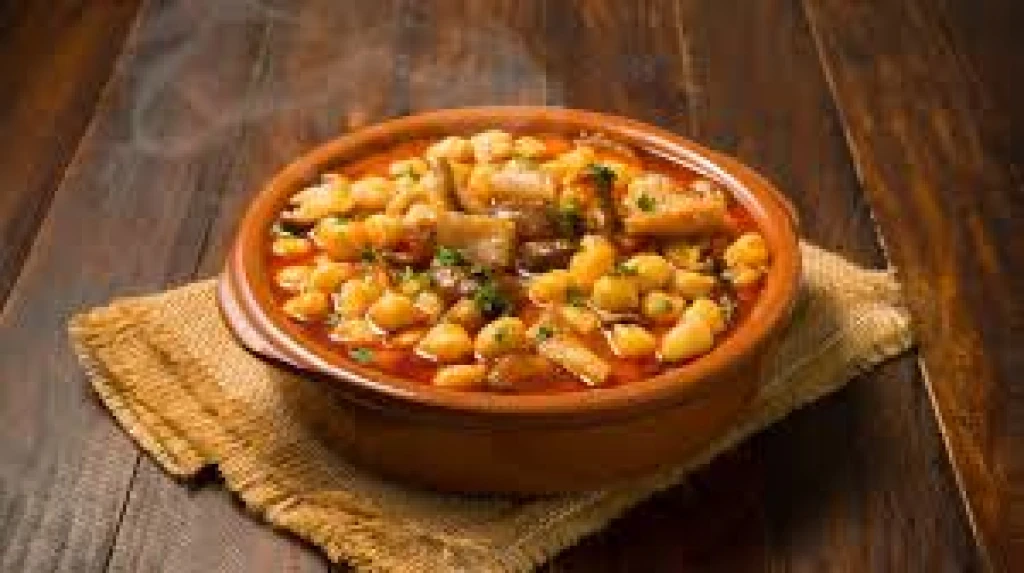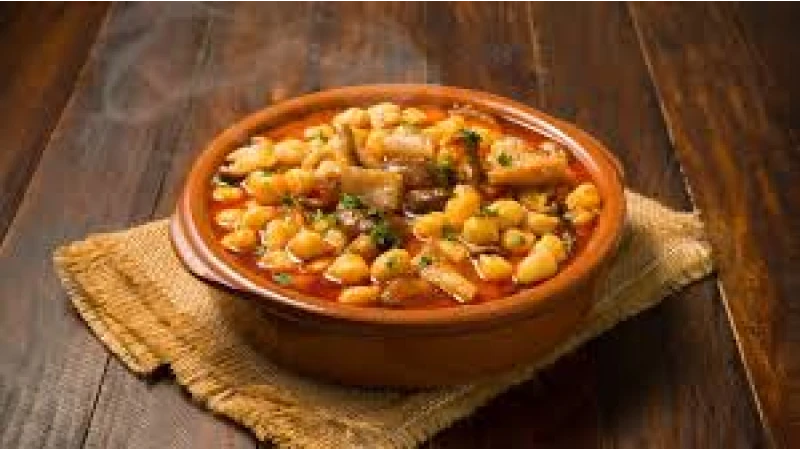Clay Pot Beans in Cappadocia – Traditional Turkish Cuisine

Clay Pot Beans in Cappadocia – Traditional Turkish Cuisine
Cappadocia is best known for its hot air balloons, fairy chimneys, and breathtaking valleys. Yet, beyond the magical landscapes lies a culinary tradition that is just as rich and unforgettable. One of the most beloved dishes in traditional Turkish cuisine, and particularly in Cappadocia, is Clay Pot Beans (Çömlek Fasulye).
This simple yet hearty meal represents both the spirit of Anatolia and the craftsmanship of Cappadocia, where pottery has been part of daily life for thousands of years.
🍲 What Are Clay Pot Beans?
Clay Pot Beans, or Çömlek Fasulye, are made by slowly cooking white beans with onions, tomatoes, peppers, spices, and sometimes beef or lamb, inside a sealed clay pot. The slow cooking process in earthenware vessels enhances the dish with a smoky, earthy flavor that cannot be replicated in modern cookware.
This dish is not only food but a reflection of local life – blending Cappadocia’s pottery heritage with its cuisine.
🏛️ A Historical Dish with Deep Roots
The origins of clay pot cooking in Cappadocia go back thousands of years. Ancient civilizations such as the Hittites and Byzantines used clay vessels for both storage and cooking. Avanos, a town on the banks of the Kızılırmak River, has been a pottery center since antiquity.
It is no coincidence that a dish like clay pot beans became popular here, where clay and craftsmanship are abundant. For centuries, families gathered around communal ovens, where clay pots filled with beans were left to cook slowly until ready for festive meals.
🌄 Why Cappadocia is Famous for Clay Pot Beans
Cappadocia’s identity is shaped by its landscape and culture. The volcanic soil not only provided fertile land for agriculture but also supplied clay for pottery. Today, Avanos is still known as the “pottery capital of Cappadocia.”
Eating clay pot beans here connects visitors directly with this heritage – the pot is made from local clay, the beans are sourced from Anatolian fields, and the recipe has been passed down for generations.
🍴 How Clay Pot Beans Are Made
The recipe is straightforward but requires patience:
- Preparation: Dried beans are soaked overnight.
- Ingredients: Beans, onions, garlic, tomatoes, peppers, olive oil, and spices such as paprika and cumin. Meat (beef or lamb) may be added for a richer version.
- Cooking: Ingredients are placed inside a clay pot, covered, and slow-cooked in a wood-fired oven for several hours.
- Serving: The clay pot is cracked or opened at the table, releasing the aroma and flavor of this traditional dish.
The result is a comforting, protein-rich, and flavorful meal perfect for Cappadocia’s cool evenings.
📍 Where to Eat Clay Pot Beans in Cappadocia
- Ürgüp & Göreme Restaurants: Many traditional restaurants feature clay pot beans on their menus.
- Avanos: Famous for pottery, Avanos is the best place to enjoy clay pot beans while also exploring pottery workshops.
- Village Guesthouses: Smaller, family-run establishments often serve homemade clay pot beans in the most authentic style.
👉 For the best experience, pair your beans with freshly baked Turkish bread and a glass of Cappadocian wine.
🍽️ Clay Pot Beans in Turkish Cuisine
Beans hold a special place in Turkish food culture. “Kuru Fasulye” (stewed beans) is often called Turkey’s national dish. What makes Cappadocia’s version special is the clay pot technique, which infuses the dish with distinct flavor and cultural value.
It is often compared with another Cappadocian specialty, Testi Kebab, which is also cooked in sealed clay pots. Together, these dishes highlight how local cuisine and pottery are inseparable.
🌟 Why You Should Try It
- ✅ Authentic Cappadocian culinary experience
- ✅ Rich, smoky flavor from the clay pot cooking process
- ✅ Strong cultural connection to local pottery traditions
- ✅ Served in a unique way – the pot is often opened at your table
- ✅ Perfect comfort food after exploring valleys and caves
🕒 Best Time to Enjoy Clay Pot Beans
While available year-round, clay pot beans are especially comforting in the autumn and winter months, when Cappadocia’s evenings are chilly. After a hot air balloon ride or a day of touring, nothing beats a hearty clay pot meal.
💡 Travel Tips
- Try clay pot beans in Avanos to combine food and pottery heritage.
- Pair with rice pilaf or village bread for an authentic taste.
- Don’t miss combining it with local Cappadocian red wine.
- Book a cooking class or village tour to learn the recipe firsthand.
🏆 Conclusion – A Taste of Cappadocia’s Soul
Clay Pot Beans in Cappadocia are not just a dish – they are a story of land, culture, and tradition. Cooked in pots made from local clay and served with Anatolian hospitality, every spoonful connects you to the history of this fairytale region.
When visiting Cappadocia, don’t stop at balloons and valleys – explore its flavors. Sit down at a local restaurant, order clay pot beans, and discover the taste of tradition.
✨ Clay Pot Beans – the heart of Cappadocia’s traditional Turkish cuisine.













